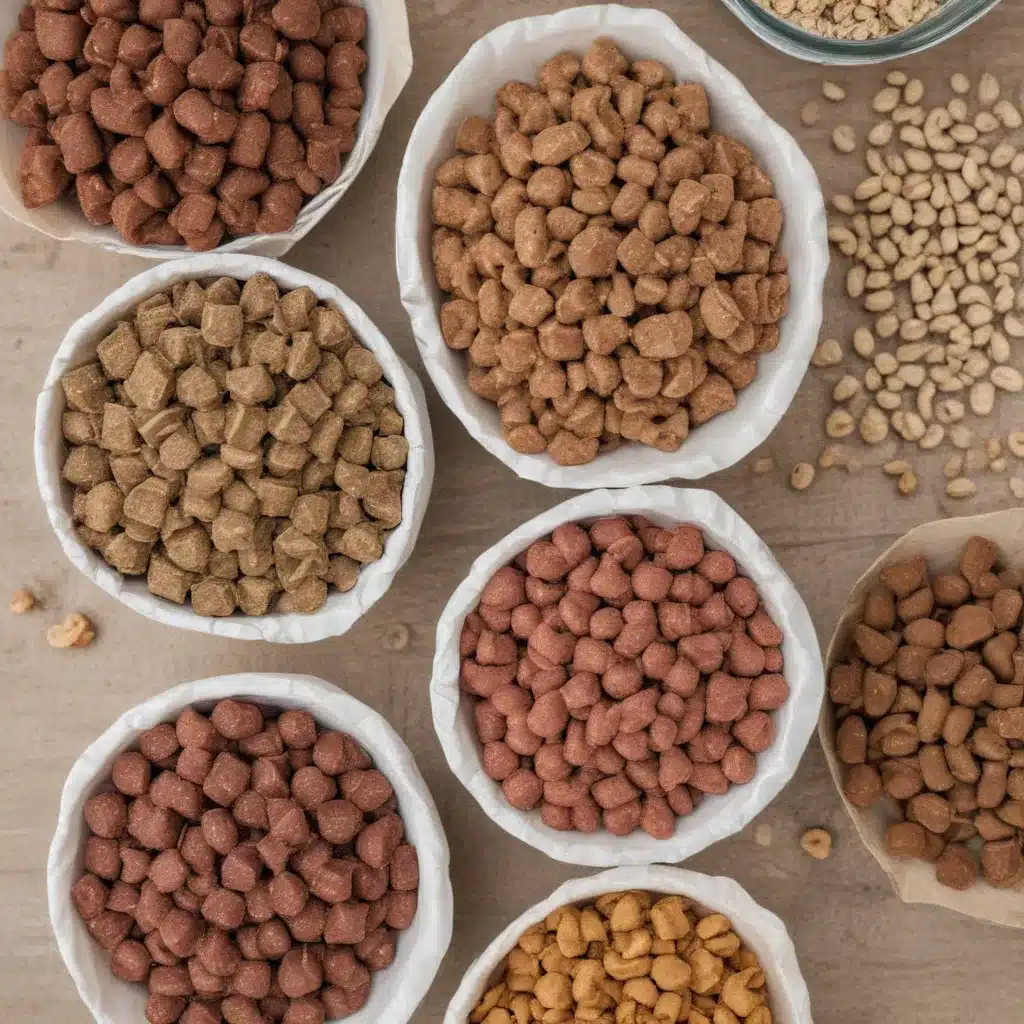
As a devoted dog owner, I’ve always been fascinated by the ever-evolving world of canine nutrition. From the days of canned mush to the recent surge in grain-free kibble, it seems like there’s a new “best” dog food on the market every other week. But one feeding trend that’s really caught my attention lately is the rise of freeze-dried raw dog food.
What is Freeze-Dried Raw Dog Food?
Freeze-dried raw dog food is exactly what it sounds like – raw meat, organs, and bones that have been gently dehydrated to remove the moisture, leaving behind a shelf-stable, nutrient-dense powder or “nugget” that you simply need to add water to before serving. This process, known as lyophilization, is designed to preserve as much of the original nutrition as possible without cooking or heating the ingredients.
The end result is a dog food that’s remarkably similar in nutritional profile to a raw, unprocessed diet, but with the convenience and shelf-life of a kibble or canned product. Proponents of freeze-dried raw claim that it provides all the benefits of a raw diet – things like improved digestion, shinier coats, and better dental health – without the hassle of handling raw meat or worrying about food safety.
The Freeze-Drying Process
The freeze-drying process for pet food involves several key steps:
-
Freezing: The raw ingredients, whether it’s muscle meat, organs, or bones, are first frozen at extremely low temperatures, typically around -40°F (-40°C) or below.
-
Drying: The frozen ingredients are then placed in a vacuum chamber where the pressure is significantly reduced. This causes the frozen water in the food to vaporize, a process called sublimation, without ever going through the liquid phase.
-
Packaging: Once the moisture has been removed, the dried food is quickly packaged in an airtight container to prevent rehydration before it reaches your pup’s bowl.
This gentle dehydration technique is what sets freeze-dried raw apart from other dry dog food formulas. Unlike kibble, which is cooked at high temperatures, or air-dried products that use warm forced air, freeze-drying preserves the natural enzymes, vitamins, and minerals found in the raw ingredients.
The Benefits of Freeze-Dried Raw
So why are so many dog owners making the switch to freeze-dried raw? Here are some of the key benefits:
1. Nutrient Density
Freeze-dried raw dog food is renowned for its high concentration of protein, healthy fats, and other essential nutrients. Since the ingredients are minimally processed, they retain more of their original nutritional value compared to heavily cooked or extruded kibble.
2. Improved Digestion
The lack of high-heat processing also means the proteins, fats, and carbohydrates in freeze-dried raw food are more bioavailable and easier for dogs to digest. This can lead to smaller, firmer stools, reduced gas and bloating, and an overall healthier gut microbiome.
3. Dental Benefits
Raw, crunchy pieces of freeze-dried meat and bone act as a natural teeth-cleaning abrasive, helping to scrape away plaque and tartar buildup. Many pet owners report less need for professional dental cleanings after switching to a freeze-dried raw diet.
4. Palatability
Most dogs find the rich, meaty flavors of freeze-dried raw irresistible, making it a great option for picky eaters or dogs that tend to turn their noses up at traditional kibble. The lack of artificial flavors, colors, and preservatives also means it has a more natural, appetizing aroma.
5. Convenience
Freeze-dried raw dog food combines the benefits of a raw diet with the convenience of a shelf-stable product. There’s no need to thaw, cook, or worry about spoilage – you simply add water, wait a few minutes, and serve. This makes it a great option for busy pet parents or those who travel frequently with their dogs.
Making the Switch to Freeze-Dried Raw
If you’re intrigued by the idea of feeding your pup a freeze-dried raw diet, there are a few important considerations to keep in mind:
-
Transition Slowly: As with any major diet change, you’ll want to introduce freeze-dried raw gradually to avoid gastrointestinal upset. Start by mixing a small amount into your dog’s current food and slowly increase the ratio over the course of 7-10 days.
-
Supplementation: While freeze-dried raw is highly nutritious, you may still need to provide additional supplements to ensure your dog is getting all the vitamins, minerals, and other key nutrients they need. Always consult your veterinarian before making major changes to your pet’s diet.
-
Food Safety: Although freeze-drying reduces the risk of bacterial contamination, raw ingredients can still harbor pathogens like Salmonella or E. coli. Proper handling, storage, and preparation is crucial to minimize the chances of foodborne illness.
-
Portion Control: Freeze-dried raw is calorie-dense, so you’ll need to be mindful of portion sizes to avoid overfeeding. Follow the feeding guidelines on the product packaging and adjust as needed based on your dog’s age, activity level, and body condition.
Making the switch to a freeze-dried raw diet can be a game-changer for your canine companion’s health and wellbeing. With the right preparation and guidance from your veterinarian, you can treat your pup to all the benefits of a raw diet with the convenience of a modern, shelf-stable formula.
Ready to get started? Check out the wide selection of freeze-dried raw dog food options and start your journey towards a happier, healthier pup today!

